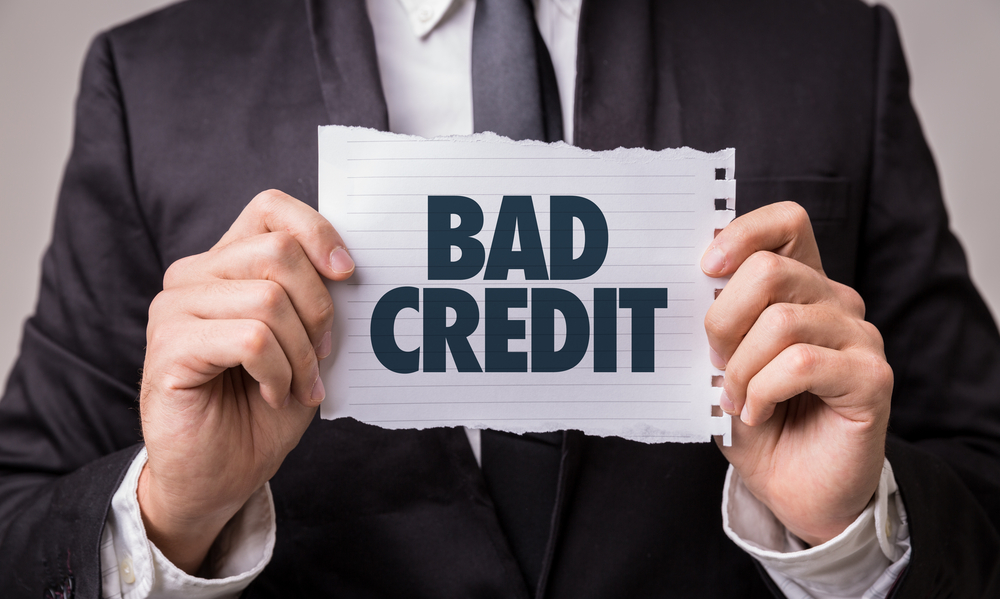Many businesses have opened in recent years, bringing small, passionate businesses to the forefront of many communities. Suppose you are a seasoned entrepreneur, a long-running corporation, or your very own newly appointed boss. In any case, merchant accounts are integral to many companies. Today we will review the ins and outs of bad credit merchant accounts. Dive into the financial insight of merchant accounts, when and how to apply for a bad credit merchant account, and your best option for bad credit merchant accounts with us.
Table of Contents:
- What is a merchant account?
- How does a merchant account work?
- What is a bad credit merchant account?
- What are the risk factors for determining merchant account credit status?
- The determinants of bad credit risk.
- How to apply for a bad credit merchant account.
- The drawbacks of a bad credit merchant account.
- Best options for bad credit merchant accounts.
What does Merchant Account Mean?
A merchant account is a bank account for businesses that allows businesses to process electronic payments. These electronic payments encompass debit, credit card, and digital wallet payments, such as Apple Pay. The merchant account is an intermediary between the customer’s card issuing bank and the bank for a business’s bank account during the payment process. Merchant accounts are incredible resources for businesses because it allows them to collect funds for transactions at the point of sale. Otherwise, business owners may have to wait for customers to pay their credit bills when a credit payment is accepted.
How Does a Merchant Account Work?
Here is an overview of the process of how a merchant account works:
Customers insert or swipe their debit or credit card at a point-of-sale payment terminal. Swiping the card initiates a communications process, sending the transaction details to the business’s merchant account provider. The merchant account provider will confirm whether or not there are enough funds with the customer’s card issuing bank to complete the sale.
Transactions are approved by the customer’s card issuing bank if there are enough funds. If there are not enough funds, then the transaction will be denied.
Once confirmed, the results will be sent back to the point of sale terminal by the business’s merchant account. A successful card processing transaction will prompt the merchant account provider to deposit funds for that transaction to your business.
What is a Bad Credit Merchant Account?

A bad credit merchant account sounds more alarming than this regular business financial practice is. Businesses with no credit history, low credit scores, or rough credit history, like bankruptcies or defaults, will find it difficult to obtain merchant accounts from popular merchant account providers.
Banks consider businesses with no credit or poor credit highly risky to fully back. As a result, a bank may classify a new business as high risk due to a lack of credit. Typically, these “high-risk” businesses will only qualify for a bad credit merchant account when this occurs. A business or business owner with low credit, no credit, or problematic credit history is usually offered a bad credit merchant account rather than a merchant account.
What are the Risk Factors for Determining Merchant Account Credit Status?
Businesses applying for merchant accounts receive evaluations on several factors. The merchant’s credit score, credit card processing history, bank statements, company website, and other related areas to comply with the underwriting application process. Dive into common risk factor determinants for credit merchant accounts below.
Bad Credit Risk Determinants
From a bank’s perspective, businesses with poor credit are more susceptible to increased chargebacks or refunds, negative bank account balances, and fraudulent or criminal activity. Here are some criteria that may rank a business as high risk.
Bankruptcies:
Bankruptcies will have a significant impact on your credit report. Chapter 13 bankruptcies will stay on the credit report record for seven years. Bankruptcies filed under Chapter 7 will remain on the credit report record for ten years. There is a long period after filing for bankruptcies where business owners and businesses only have access to bad credit merchant accounts. Both personal and business bankruptcies filed in previous ventures will be reviewed when determining a merchant’s risk factors.
Excessive Chargebacks or Refunds:
Chargebacks are a payment demand by a credit-card provider for a retailer to pay the loss on a fraudulent or disputed transaction. Each bank or payment processing company that issues the merchant account can set a threshold for chargebacks and refunds. If this threshold is met or exceeded with frequent refunds or a high rate of chargebacks, the merchant account can be closed by the provider. Payment processors generally consider chargeback rates higher than 2 percent as high risk.
Low Personal Credit Score:
First-time businesses without a pre-established history with their companies may have difficulty qualifying for accounts using the business solely. In this event, a bank or payment processor will run a credit check on the business owner to satisfy the application requirements. Business owners with no credit history or poor personal credit scores are more likely to be categorized as high-risk, qualifying for a bad credit merchant account.
Outstanding Liens:
A lien is a right to keep the possession of a piece of property that belongs to someone until the debt owed by that person is discharged, or released. Outstanding liens can have a significant impact on your credit merchant account status. Certain liens against business property owners may be considered by the merchant account issuing bank or payment processor in their creditworthiness evaluation.
Outstanding Judgements:
A merchant account provider will consider any outstanding judgements imposed by a civil or criminal court. Judgments that have not yet been paid significantly negatively impact creditworthiness.
Working in a High-Risk Industry:
Some businesses are categorized as “high risk” based on the products or services provided within their industry. High-risk industries include electronics, furniture, and moving companies, to name a few. Review our “Merchant Account Services for High-Risk Industries” breakdown for a complete list of high-risk industries.
How to Apply for a Bad Credit Merchant Account

The process of applying for a bad credit merchant account is similar to the process of applying for a loan at a bank. Businesses ready to apply for a bad credit merchant account will need the following:
- A Valid Government-Issued ID (i.e., driver’s license, state-issued ID, or passport)
- A Bank Letter or Voided Check
- A Secure and Functioning Website
- Last 3 Months Bank Statements
- 3 Most Recent Months of Processing Statements, if applicable
- A Tax Identification Number, and Either A Social Security Number (SSN) or Employer Identification Number (EIN)
- A Chargeback Ratio Below Required Threshold, typically 2%
Submitting the application and the above documents begins the process for a merchant account. The issuing bank or payment processor for merchant accounts will present your items to an underwriting team, who will review and ultimately approve the application as a merchant account or a bad credit merchant account.
The Drawbacks of a Bad Credit Merchant Account
The main drawback to a bad credit merchant account is that restrictions are placed on your merchant account. Some of the regulations include:
Monthly Sales Volume Limit Restrictions:
Bad credit merchant accounts are often subject to monthly sales volume limit restrictions. Placing a limit on monthly credit card processing volume can be an encumbrance to businesses. When businesses limit the number of credit card transactions they can process each month, they can quickly reach that cap during a month of growth in sales and operations. When this occurs, a merchant is forced to stop accepting debit and credit cards as forms of payment until the start of the following month.
Higher Chargeback and Processing Fees:
A bad credit merchant account often results in higher fees to cover the bank or payment processor’s risk of loss. Merchants will pay higher monthly payment processing fees. Higher fees can add up and reduce the overall profits of a business. Increased chargeback fees can also be imposed when customers dispute card sales transactions.
Rolling Reserve Restrictions:
Rolling reserves are a sub-account for merchants that withhold a certain percentage of the gross credit card sales. The funds from credit card sales are held in deposit in a
non-interest bearing account and held for a set time before being released back to the merchant’s bank account. Industry percentages for these accounts range from 5% to 15%. Payment processors may impose rolling reserve accounts on businesses with bad credit merchant accounts. To learn more about bad credit merchant accounts, visit our website.
Best Options for Bad Credit Merchant Accounts
EMB is the Nation’s number 1 high-risk credit card processing company. Our commitment and dedication to our customers equip us with the expertise and tools to meet the challenges of operating high-risk businesses. We believe each and every business owner deserves the chance to strive for success. To help companies to grow and prosper, we offer a wide range of solutions, including ACH Processing and Business Funding.

Our Chargeback Dispute Resolution and Prevention Programs include:
- Instant Check Processing Solutions
- High-Volume Payment Solutions
- Merchant Cash Advances
- Mail Order/Telephone Order (MOTO) Processing
- Online Payment Gateways
- Point-Of-Sale (POS) Solutions
With stellar customer service, an A+ rating from the Better Business Bureau, and a positive reputation for delivering the best results, we are confident in assisting your business grow today! To better understand the available options contact the EMB team today!


